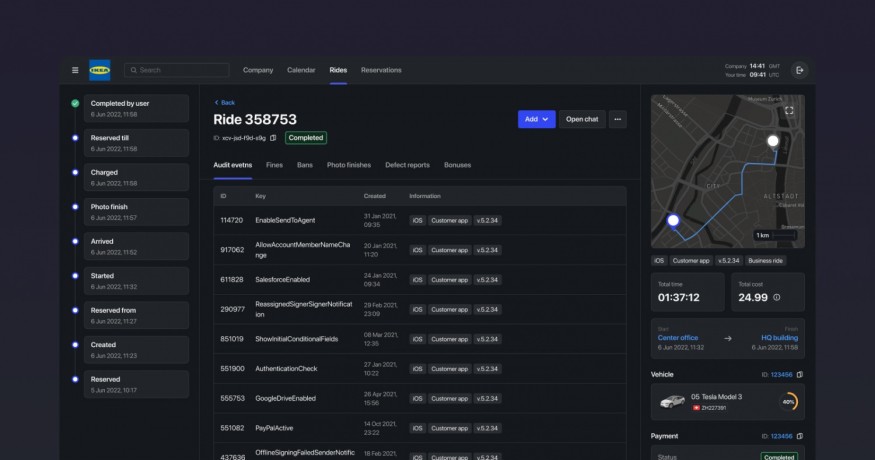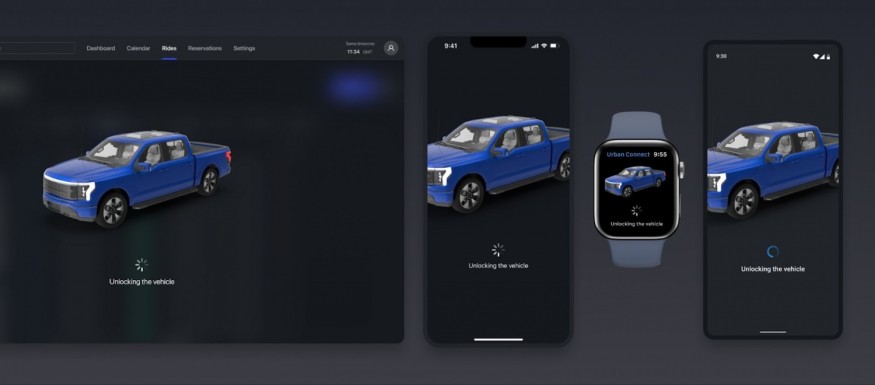Author Mikhail Kurakin, Product Designer at Urban Connect
The transportation sector is currently experiencing a digital transformation, much like the majority of our global economy. With this comes the ability to manage large amounts of data and identify new opportunities to launch innovative services.
In this opinion piece, I share insights into the product design process of transport apps. I discuss the trends I believe will play a crucial role in the future development of these software products.
Mobility-as-a-Service (MaaS)
In January 2023, Euromonitor International predicted a 4.3% increase in shared mobility service orders, resulting in a new high of $214 billion. Despite the global economic slowdown and the reduction of transport costs by consumers and businesses, the shared mobility industry is expected to continue its growth trajectory.
Industry analysts expect the shared mobility market to move towards consolidation - as was evident in 2022 with Volkswagen's sale of its WeShare car sharing service to Miles and the formation of ShareNow by Car2Go and DriveNow being sold to Stellantis.
While MaaS applications face significant developmental challenges, such as sharing data between transport operators and finding more flexible pricing models for users, Euromonitor International analysts predict that 2023 "will be interesting" for the category of Mobility-as-a-Service solutions Many governments have high hopes for the shared mobility sector, as the decline in private car travel is critical in creating environmentally-friendly transportation systems in large cities.
The Design Process
Designing any product, from applications to phones and cars, can be considered an intersection of art and innovation. It is a fundamental aspect of various fields, including architecture, landscape, interior design, mechanical engineering, fashion, and the Internet.
When speaking about important criteria for the success of a transport application, we must see the convenience indicators from the users' point of view. In the design stage, the Product Designer must be equally good at both creative and technical development methods.
As a product designer with years of practical experience in the international digitalization of transport services, I have gained invaluable insights and developed my design system. During my time working for the Israeli B2B platform Gett in their London office, where I designed a mobile application for B2B clients and a back office for driver interaction, I established a set of straightforward design principles that apply to any project.
My first design rule is: create an interface that you would be pleased to use every day.
As a product designer, I understand that my role is crucial in providing an optimal experience for users when working with an application, and taking into account their individual requirements. One of my current projects is with Urban Connect AG, a Swiss B2B company that provides transportation options for companies like Google, IBM, and Roche. This includes an internal application for employees, a specialized application for repair workers, and a back office to manage the entire system.
Throughout my career, I've learned the importance of keeping detailed documentation during the product design process. This can ultimately save a lot of time and effort for the entire development team. Additionally, I've found that designing products with darker colors, rather than traditional light designs, helps relieve eye strain for employees and customers when working at night.
Design plays a critical role in the profitability of a project. To be effective, Product Designers need to comprehensively study the target audience, assess the needs and priorities of users, conduct in-depth analyses of business processes, and highlight both effective and ineffective operational chains. It's essential to have a clear idea of what we want to achieve at the end of a project and use the maximum number of ready-made solutions to save time and money for all participants in the development process.
A Look Behind the Screen
When it comes to designing transport applications, the user's geolocation and information about available locations and time periods they have in common are crucial to the app's functionality. This requires the incorporation of points on the map and the distance and transportation time from the user to these points. The logic of calculating trip data is built around these values, making them a critical component of any transport app.
Another essential aspect of a transport app is providing complete information about the beginning and end of the trip, as well as all stops along the route. At Urban Connect, for example, the helpdesk needs access to a complete picture of events if an investigation is required at the end of the trip.
In order to be effective, all participants in the development process should have access to time and geolocation information at any given moment. This information should be accessible on all types of devices, ensuring that everyone involved can view any relevant data whenever necessary. By making this data available and easy to access, we can create transport apps that are not only functional but also user-friendly.

Ability to Work with All Platforms
In the transportation industry, having an omnichannel, omnidevice, and multi-platform product is critical. . A product designer should possess the ability to work with all types of platforms, including Web, iOS, and Android, and must develop a habit of staying up to date with the latest updates to ensure that the product stays at the forefront of innovation..

Ability to Test Functionalities
In the field of digital mobility, it is essential to periodically test a product's functionality in relation to various modes of transportation. To achieve this, an Urban Connect Product designer is equipped with a toolkit that allows them to test around 95% of daily cases encountered in the development process..
The toolkit consists of the following items:
Inverse Box - a "suitcase" that simulates the operation of a car
AXA Lock - a Bluetooth-enabled bicycle lock
Raspberry Pi - a tiny computer that automatically recognizes company vehicles in specific locations

Product design is a cost-effective and accessible way to test any business hypothesis. For instance, relocating a button on the screen may impact the speed of the driver's interaction with the application. A/B testing enables a full-fledged product prototype to be developed even before writing the first line of code without spending time or money on confirming the original hypothesis's advantage or disadvantage.
Ability to Work with Integrations
As businesses develop, they tend to improve. In the transportation industry, services receive an acceleration of their evolution when integrated with other services. Urban Connect, for instance, develops transport applications and integrations with parking automation and public transport companies simultaneously... For such integrations to run seamlessly, it is crucial to learn how to process as much incoming data as possible.
Minimalism
Practical and functional minimalism is widely used in many areas of design, including building architecture and household appliances. IProduct design minimalism is unlikely to ever go out of style, and I predict that it will gain traction in more areas, including transport applications.
Virtual and Augmented Reality
Augmented reality innovations are already widely used in business applications, and with time, even developmental tools will be accessible within these realities. oday, transport applications can dynamically greet the user with their time of day. As these applications improve, AR and VR will become commonplace within the transport industry and make life easier for all road users..
I believe this is the golden age for such innovations.
© 2025 ScienceTimes.com All rights reserved. Do not reproduce without permission. The window to the world of Science Times.











